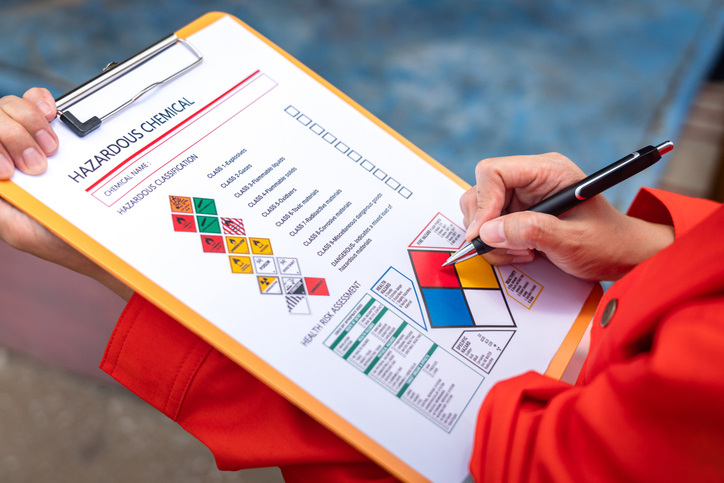What is SDS Section 12?
The SDS Section 12 is the ecological information section. It provides information to evaluate the environmental impact of chemicals or products if they were to be released into the environment. This section of the SDS includes information about the environmental fate — the risk of a hazardous material entering the environment and the risk of that substance accumulating — and the environmental effects — the ability of the hazard to harm organisms.
There are various subsections of Section 12, including:
- 12.1 – Ecotoxicity: States whether or not the chemical is toxic to the environment
- 12. 2 – Persistence and Degradability: Provides information on the persistence and degradability of the substance. Persistence refers to the length of time a substance will remain in the environment after being introduced and degradation refers to the ability of the substance to be decomposed chemically or biologically
- 12.3 – Bioaccumulative Potential: This is the direct indication of the amount of the chemical product that will build up in the environment to the point that it becomes a significant problem
- 12.4 – Mobility in Soil: The measurement of the way a product spreads through the environment, including through air, biota, sediments, soil, and water.
- 12.5 – Results of PBT and vPvB Assessments: The PBT assessment means your chemical is persistent, bioaccumulative, and toxic, and the vPvB assessment indicates that your chemical is very persistent and very bioaccumulative
- 12.6 – Other Adverse Effects: This section includes any information that is known about the further effects of your chemicals on the environment.
Why SDS Section 12 Is Important
SDS Section 12 provides crucial information about your products and chemicals about how they may impact the environment. This gives consumers the ability to understand what they are using and how to properly dispose of them with minimal harm to the environment.
Get the Information You Need for SDS Section 12 Through Biodegradability Testing
Biodegradability testing can be used to determine a substance or chemical’s ability to be degraded in different environments. There are many tests that can be used to determine this information, but some common tests for biodegradability include the OECD 301, OECD 306, ISO 17556, and ASTM D6691 tests, and for toxicity the OECD 207 and 208 tests.
OECD 207
The OECD 207 ecotoxicity test is a standard testing method that determines the toxicity of your products to earthworms. This specific test has two methods, the paper contact test and the artificial soil test.
For this method, the earthworm species used is Eisenia foetida, or Michaelsen worms. In both methods, the earthworm is exposed to your product, and the toxicity of it is measured over a specified time period.
OECD 208
This test assesses the effects on seedling emergence and early growth of higher plants following exposure to the test substance. It measures the visual assessment of seedling emergence, biomass measurements, shoot height, and detrimental effects on different parts of the plant when they are exposed to the test substance.
OECD 301
The OECD 301 tests are used to determine the ready biodegradability of chemicals and products. There are a few different OECD 301 tests, including OECD 301B, 301D, and 301F. OECD 301B tests the ready biodegradability of a substance by measuring the CO2 evolution, OECD 301D measures the dissolved oxygen consumption in closed bottles, and OECD 301F measures dissolved oxygen consumption in respirometers.
ASTM D5511
This test determines the degree and rate of anaerobic biodegradation of plastic materials. It is applicable to all plastic materials that are not inhibitory to the microorganisms present in household waste.
Need Help with Your SDS Section 12? Turn to Aropha
We combine customized AI models with lab testing to create streamlined, efficient, and accurate biodegradability testing for your material development. You will be able to accurately predict the biodegradability of your product with our ArophaAI software and then send your products for biodegradability testing at our facilities so you can get all of the information you may need for your SDS Section 12.
Contact our team today to get started.

